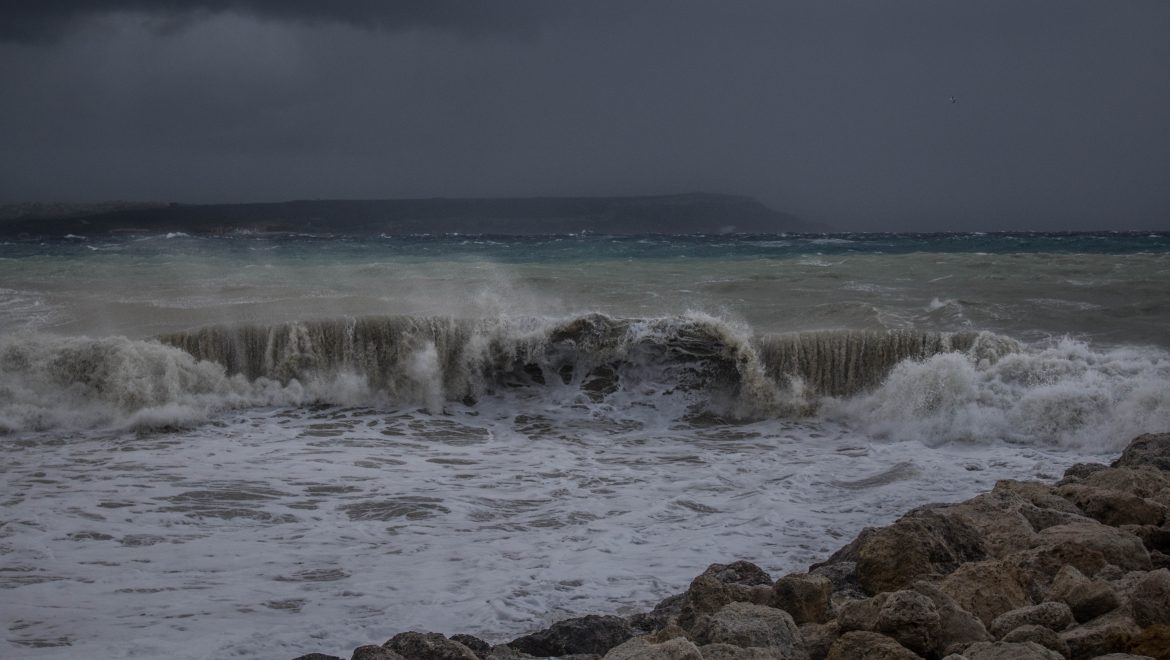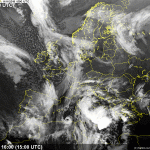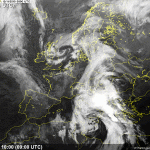
This was the strongest wind in months. A maximum wind gust of 78.9 km/h was measured in Nadur. The severe gale-force winds and heavy rain caused disruption and some light damage. In this report, we will describe what gave rise to this intense system and how it affected the Maltese Islands.
The intense system classified as a Mediterranean Tropical-Like Cyclone (or Medicane). Being the first one since February 2019, it formed early on Monday 11/11 and dissipated by late on Tuesday 12/11. A strong jet-stream blew a stream of very warm and humid air from over the Sahara Desert towards the western and central Mediterranean. Simultaneously, cold air from northern Europe penetrated the western Mediterranean. Both air masses clashed together, initiating the process of Mediterranean Tropical-Like Cyclone development. As a result of the clash, an existing low pressure system started intensifying very quickly, in a process referred to as cyclogenesis in meteorology. Atmospheric pressure at its centre dropped drastically, and a Mediterranean Cyclone was officially formed. The system made landfall in Algeria and lost most of its strength. Once it emerged over the very warm sea of the Gulf of Gabes, it regained strength. Its ‘eye’ was over the Sicilian Channel, close to the islands of Lampedusa and Linosa, at its closest point to the Maltese Islands.
The cold air mass within the stormy system caused temperatures to dip all around Malta and Gozo. In fact, the temperature at our weather station in Għarb dropped by some 7°C in one hour. An outer band of convection associated with the storm system affected parts of the Maltese Islands, especially Gozo, in the mid-afternoon on Monday 11/11. At its closest point, the Mediterranean Tropical-Like Cyclone drenched the Maltese Islands with a series of heavy rain and hail showers. These lasted all day Tuesday 12/11. The storm generated waves of up to 8.0 metres.
72.5 mm of rain were measured in the 48 hours that the storm system affected us. Għarb was the wettest locality. Thanks to this heavy precipitation, Għarb reached the monthly average for November before mid-month. The severe gale-force winds produced some light damage. The damage included uprooted trees, collapsed walls and downed power lines. A number of coastal areas suffered extensive flooding from the high waves. The ferry linking the two islands of Gozo and Malta was suspended for over 12 hours, as the very rough sea made crossing the channel too dangerous. Similarly, several catamaran journeys between Malta and Sicily were cancelled.
Thanks to Andrea Muscat for the photos!
- Andrea Muscat
- Andrea Muscat
- Andrea Muscat
- Andrea Muscat
- Andrea Muscat
- Andrea Muscat
- Andrea Muscat
- Andrea Muscat
- Jean Pierre
- Jean Pierre
- Jean Pierre
- Jean Pierre
- Jean Pierre
- Jean Pierre
- Maggie May



















0 comments
Write a comment